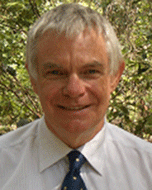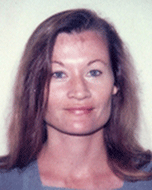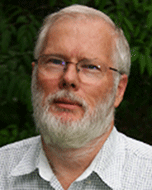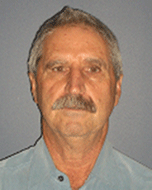The Millungera Basin—new geoscience supporting exploration*
Laurie Hutton A , Melanie Fitzell B , Kinta Hoffmann C , Ian Withnall D , Bernie Stockill E , Ben Jupp F and Paul Donchak GA Geological Survey of Queensland 80 Meiers Road Indooroopilly, Qld. Email: laurie.hutton@deedi.qld.gov.au
B Geological Survey of Queensland 80 Meiers Road Indooroopilly, Qld. Email: Melanie.Fitzell@deedi.qld.gov.au
C Geological Survey of Queensland 80 Meiers Road Indooroopilly, Qld. Email: Kinta.Hoffmann@deedi.qld.gov.au
D Geological Survey of Queensland 80 Meiers Road Indooroopilly, Qld. Email: Ian.Withnall@deedi.qld.gov.au
E Geological Survey of Queensland 80 Meiers Road Indooroopilly, Qld. Email: bernie.stockill@deedi.qld.gov.au
F Geological Survey of Queensland 80 Meiers Road Indooroopilly, Qld. Email: Ben.Jupp@deedi.qld.gov.au
G Geological Survey of Queensland 80 Meiers Road Indooroopilly, Qld. Email: paul.donchak@deedi.qld.gov.au
The APPEA Journal 50(2) 727-727 https://doi.org/10.1071/AJ09091
Published: 2010
Abstract
An unknown sedimentary sequence was first recorded during a Geoscience Australia/Geological Survey of Queensland/pmd*CRC deep seismic reflection survey in the Mount Isa Inlier and adjacent undercover terrains, during 2006/07. The sequence occurs unconformably underneath the Carpentaria Basin succession in the Julia Creek area, east of Cloncurry in north Queensland, and is named the Millungera Basin.
A section through the basin is recorded along seismic line 07GA–IG1, recorded between north of Cloncurry to east of Croydon. In this section three internal sequences are noted—with two strongly reflective units separated by a poorly reflective unit.
As well as deep crustal seismic reflection profiles, magnetotelluric profiles were collected along the same traverse. These data show a moderately conductive Millungera Basin underlying the strongly conductive Carpentaria Basin. Zones of limited reflectors beneath the basin in the seismic sections have been interpreted as granites, raising the possibility of raised geothermal gradients.
The Millungera Basin may comprise a potential geothermal target. The Millungera Basin sequence is interpreted to overlie granites. Adjacent Proterozoic granites of the Williams Batholith are known to be high heat producing granites, containing high levels of potassium thorium and uranium.
The hydrocarbon potential of the basin is similarly uncertain. Strong reflectors in the seismic sections may be coal beds. Although the depth of the basin in the seismic section is insufficient to have reached the oil window, interpretation of gravity profiles by Geoscience Australia suggest the basin deepens to the south, possibly reaching 4,000 m. If fertile beds have reached the oil window, the structurally more complex eastern side of the basin may contain petroleum traps.
The age of the rocks in the Millungera Basin is not known. Constraints from the seismic suggest between the early Mesoproterozoic and the Middle Jurassic.
Investigations into the nature of the basin are continuing. A more detailed magnetotelluric survey is being undertaken to better define the shape of the basin. In order to reliably describe the basins components, a deep drilling program is required.
Keywords: North Queensland, Mount Isa, Julia Creek Millungera Basin, Carpentaria Basin, sedimentary basins, Paleoproterozoic, Jurassic to Cretaceous, deep crustal seismic, aeromagnetics, gravity, seismic interpretation, magnetotellurics, geothermal prospecting

Laurie Hutton graduated from the University of Queensland in 1972, completing honours the following year. Since then he has been involved in regional geological mapping in Queensland. From 1975 until 1981, he was involved in the geological mapping programme at Mount Isa. In 2004, he was awarded a Doctor of Philosophy for a thesis on mapping in the Pentland area of Queensland. From 2004 to 2009, he was involved in re-mapping of the Mount Isa terrane. This project included deep crustal seismic profiling. During this project, the Millungera Basin was first discovered, and has since been the focus of other studies. |

Melanie Fitzell joined the Geological Survey of Queensland in 2003. She has worked on several regional mapping projects throughout Queensland and has developed an interest in 3D geological mapping and modelling. Melanie moved into the Energy Unit in late 2008 to develop skills in seismic interpretation and basin analysis studies. Melanie was assigned to the Coastal Geothermal Energy Initiative team in mid 2009. |

Kinta graduated from James Cook University in 1984 with a BSc Geology Honours researching the Toolebuc Formation oilshale. After working briefly for ESSO Minerals and as a curator of the JCU Geology Department, she joined the Geological Survey of Queensland in 1986 and has been involved in basin studies of the Cooper, Eromanga, Adavale, Surat and Bowen Basins. She is currently working with Geoscience Australia and ANU in collaborative marine geoscientific research off northeast Australia. |

Since gaining a BSc (Honours) degree from the University of Queensland in 1971, Ian Withnall has worked for the GSQ, mostly in mapping of Proterozoic and Palaeozoic terranes. He was a member of a team with the BMR in the Georgetown region (1972–83), GSQ teams studying the Broken River Province (1984–89), Anakie Province (1990–94), Lolworth-Ravenswood Province (1988–94) and Connors and Auburn Arches (1996–99). In the mid-1990s, he played a major role in the production of the North Queensland Geology volume. Since 2005, he has been working in the Mount Isa area. Apart from his involvement in all aspects of geological mapping he has been heavily involved in database development. He is currently Geoscience Manager for Minerals Geoscience. |

Bernie Stockill is a Senior Geoscientist with DME, having worked in the Queensland Mines Department in various positions since 1973. Bernie graduated from the Queensland University of Technology with a B AppSc in 1984. His expertise includes gravity and magnetics and he has worked extensively throughout Queensland. He has been involved in the planning and operations of the regional magnetic/radiometric and gravity surveys carried out by the Queensland government. Member: the Australian Society of Exploration Geophysicists (ASEG). |

Ben Jupp has a BSc (Honours) from the University of Melbourne. He is currently employed at the Geological Survey of Queensland working on an updated 3D model of the Mt Isa Inlier and the greater North West Queensland region. He has previously been employed through the pmd*CRC at both Monash University and Geoscience Australia, where he worked on various projects including 3D modelling of the Lawn Hill and Mt Isa regions and the development of an expert alteration and mineral pattern prediction system. |

Paul Donchak graduated with BSc (Honours) in Geology from the University of Queensland in 1997. He was subsequently employed by the Geological Survey of Queensland (GSQ) and has been involved in field geological mapping programs over most of Queensland, ranging from high-grade basement terranes of the Mount Isa Inlier, to deformed flysch sequences of the back-arc Hodgkinson Province and accretionary Texas Subprovince. His research interests include structure, tectonics, basin evolution and 3D reconstruction. Paul is currently in charge of the Geodynamics and 3D Modelling Group within the newly formed Greenfields Prospectivity Unit of the GSQ, undertaking studies to promote greenfields exploration for both mineral and energy resources. |
References
Hutton, L.J., Gibson, G.M., Korsch, R.J., Withnall, I.W., Henson, P.A., Costelloe, R.D., Holzschuh, J., Huston, D.L., Jones, L.E.A., Maher, J.L., Nakamura, A., Nicoll, M.G., Roy, I., Saygin, E., Murphy, F.C., and Jupp, B., 2009—Geological interpretation of the 2006 Mt Isa seismic survey. Proceedings of the NQEM 2009 Symposium, Townsville, June 2009 AIG Bulletin No. 49, 137–41.Hutton, L.J. , Withnall, I.W., Costelloe, R, Gibson, G., Henson, P., Holzschuh, R., Huston, D., Jones, L., Korsch, R., Maher, J., Nakamura, A., Nicol, M., Saygin, E., Roy, I., Murphy, F.C., Jupp, B., and Stewart, L. 2009—Deep Seismic Reflection Profiling in the Mount Isa Province—linking crustal structure to mineralisation. Proceedings of the Tenth Biennial SGA Meeting, Townsville, 2009, 945–47.
JHR Oil & Gas Company, 1988—Drilling programme and prognosis for JHR Gladevale Downs 1, ATP 372P Queensland. Report CR17715 held by the Queensland Mines & Energy, unpublished.
Korsch, R.J., Withnall, I.W., Hutton, L.J., Henson, P.A., Blewett, R.J., Huston, D.L., Champion, D.C., Meixner, A.J., Nicoll, M.G., and Nakamura, A., 2009—Geological interpretation of deep seismic reflection line 07GA-IG1: The Cloncurry to Croydon transect. Proceedings of the NQEM 2009 Symposium, Townsville, June 2009, AIG Bulletin No. 49, 153–57.


